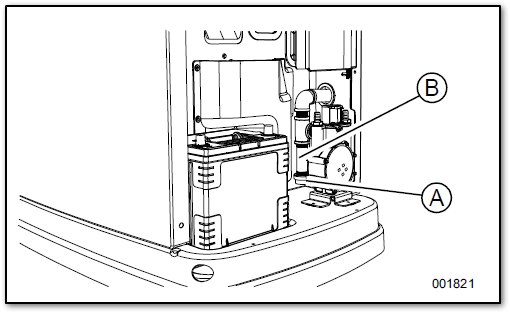Cleaning the Sediment Trap
Generator owners should reference these articles before cleaning the sediment trap.
Environment
This article applies to 10 kW - 26 kW Guardian series generators manufactured after 2017.
Maintenance Interval for Sediment Trap Inspection/Cleaning
Cleaning the sediment trap is listed as part of a generator's maintenance schedule, however, the specific interval is dictated by local codes and guidelines and changes based on location.
Who can perform Sediment Trap Inspection/Cleaning?
Inspection/Cleaning of Sediment Trap
Before Sediment Trap Inspection/Cleaning
Consult the Owner's manual
The process covered in this article applies to air-cooled Guardian (10-26 kW) series generators. Owners should always reference the user manual for maintenance tasks. See How Do I Find a Copy of My Home Standby Generator Owner's Manual and Spec Sheets? for more information.
Maintenance Safety
Owners should reference What Safety Precautions Should I Take when Performing Maintenance on My Generator? to ensure maintenance is performed in a safe manner.
Performing Sediment Trap Inspection/Cleaning
1. Remove the intake side panel, see the How Do I Remove the Generator Side Panel? article for more information.
2. Turn the generator fuel supply OFF.
3. Unscrew and remove the cap (A).
4. Use a clean-out tool (not provided) to remove accumulated moisture and particles from the cap and body (B).
5. Wipe the inside of each component with a clean, dry, lint-free cloth.
6. Seal the threads of the cap with the appropriate sealing compound. Install the cap and hand-tighten it.
7. Tighten the cap with an appropriately sized pipe wrench. DO NOT over-tighten.
After Sediment Trap Inspection/Cleaning
After performing routine maintenance or service work on the Sediment Trap, Generac recommends performing a fuel system leak test by an authorized professional unless local codes and guidelines state differently.
8. Turn the generator fuel supply ON. Inspect for leaks by spraying all connection points with a non-corrosive gas leak detection fluid. The solution should not be blown away or form bubbles. see How to perform a Fuel System Leak Test for more information.
9. Install the intake side panel.
See also



